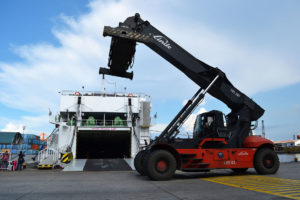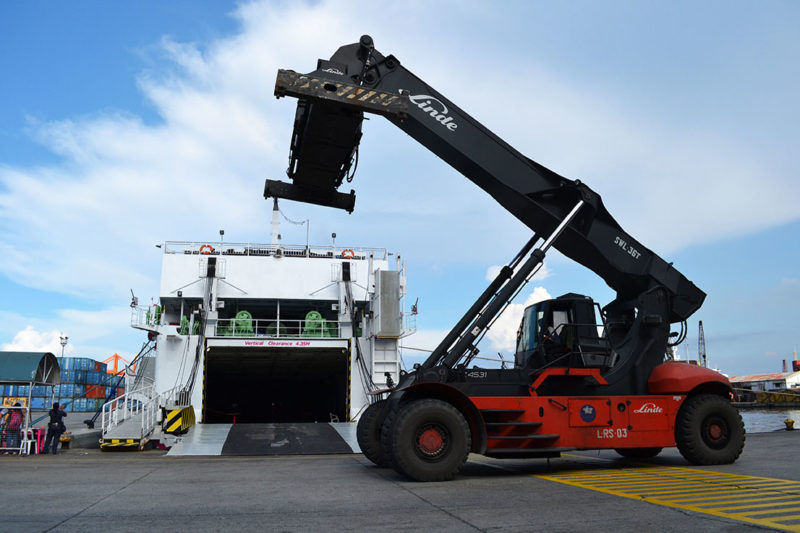 Shipping stakeholders on May 17 attended the first public hearing on port operator Manila North Harbour Port, Inc.’s (MNHPI) request for a 37.5% increase in cargo-handling tariff at the Manila North Harbor.
Shipping stakeholders on May 17 attended the first public hearing on port operator Manila North Harbour Port, Inc.’s (MNHPI) request for a 37.5% increase in cargo-handling tariff at the Manila North Harbor.
Citing ballooning costs in recent years, MNHPI filed the request for tariff adjustment with the Philippine Ports Authority (PPA) in August 2015.
The request comes after PPA granted MNHPI a 10% provisional rate increase in 2013 and an 8% tariff rate increase in 2014.
In a position paper, the port operator said the cost of operating Manila North Harbor has risen. Situated in the nation’s capital, MNHPI noted Manila North Harbor has “higher cost components owing to higher cost of living” compared with other major ports in the country such as Davao, Cebu, and Batangas.
It added that the request for a tariff adjustment reflects increases in various cost structures and components, supports competitiveness of operations, and ensures the effective discharge of services to various port users.
The petition, the company said, was computed based on four cost drivers: labor, fuel, power, and maintenance of cargo-handling equipment.
MNHPI said labor costs have increased 27.58% from 2012 to 2014. Due to more high-capacity cargo-handling equipment and upgrade of the terminal operating systems at the port, trained personnel had to be recruited to ensure efficient operations. MNHPI also consolidated into one the port unions, which it said led to “improved relations with the port workers and an effective deployment of personnel and discharge of various services.”
For the same two-year period, fuel costs rose to 126.11% per twenty-foot equivalent unit (TEU), MNHPI noted. Although fuel prices have decreased per liter, the cost per TEU has increased mainly because of the increase in the port’s cargo-handling equipment fleet, MNHPI explained.
Electricity costs from 2012 to 2014 also grew by 129%, and include power consumed by ship-to-shore container quay cranes as a result of the improvement of yard and pier lighting.
Maintenance of cargo-handling equipment, too, incurred a 177.67% hike in costs.
Considering the four factors, MNHPI insisted on the “need to increase the present tariff rates at Manila North Harbor.”
Moreover, the port operator said the intended increase would be “solely based on cost recovery for the period covered” and excluded “investments made on civil works, equipment, and information technology which (are) already at P8 billion.”
During the public hearing, MNHPI chief finance officer Ariel Victoria said they had computed the impact of the planned increase on commodities.
For rice, an additional P0.04 would be added per kilogram in a TEU, while P0.08 was the additional cost per kilogram of banana in a TEU. Added cost on steel was computed at P0.08 per RT.
Rates too steep?
Stakeholders said they were not against the proposed increase but would like to determine what represented “just and reasonable” rates for implementation.
Supply Chain Management Association of the Philippines president Corazon Curay, during the hearing, said “we are for modernization, but we are for affordable modernization.”
Curay said the proposed 37% increase was “very high” and would be borne by shippers and, eventually, consumers. She added that the tariff adjustment should also consider economies of scale and port volume, which have increased based on the MNHPI presentation.
“We are willing to collaborate and cooperate with the other groups and with the petitioner to determine the just and reasonable rates,” Curay said.
Philippine Liner Shipping Association executive director Petrona Gatdula requested for copies of the petition and supporting documents to help them assess the request better. Invitations sent to stakeholders by the PPA did not include MNHPI’s position paper and supporting papers, which the port operator reproduced for stakeholders only after the hearing.
Gatdula noted that MNHPI basing its computations per kilogram would “mislead us into seeing that (the impact of the increase on rice shipments would) only be about five centavos per kilo.” In reality, she claimed, this would translate to a larger amount when one takes into consideration the carriage of 1 million kilos per trip.
Inland Haulers and Truckers Association president Teodorico Gervacio said his group was not opposed to the increase as they would not be directly affected by it. Still, he commented the request was “too high” and that it should translate to improvement in truck turnaround and the operation of terminal systems.
Stakeholders have until June 1 to submit their position papers to PPA and MNHPI for evaluation by a technical working group that will submit its recommendation to the PPA Board, which will render the final decision. – Text and photo by Roumina Pablo





